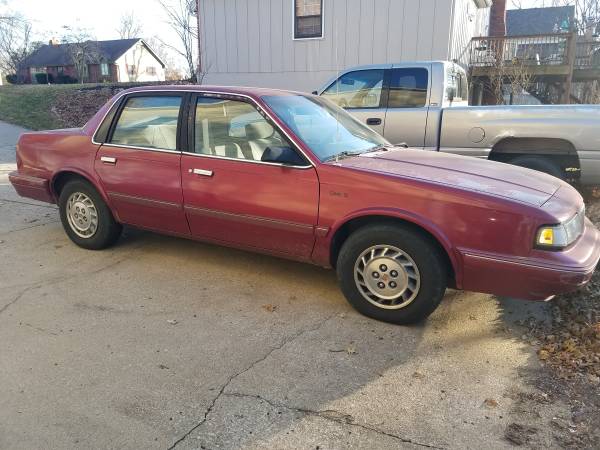
Read more
MONEY
In defense of ugly jackets
(Or, if I were Hillary Clinton’s speechwriter.)

What do you think it retails for? $5,000? $7,000? That’s what Donald Trump pays for his designer suits. [beat] [audience boos]
$10,000? No. It retails for $12,495.00. [beat] [audience boos]
But I paid $12.50 for it. Why? Because it’s ugly. I went to Goodwill and I had so much to choose from, an abundance of jackets, but I chose this one. Why? Because it was the most attractive one there. [beat] [audience laughs]
Would you wear this jacket outside the house? No. Nobody with good taste would. It’s warm, I’ll give you that. And roomy. Look how roomy it is. It’s well made. It is an Armani, after all. But it’s ugly. Not only wouldn’t you wear this outside the house, you wouldn’t wear it to a job interview.
Yet that’s what most of you, our working women today, have to choose from: ugly, uglier, and ugliest. [beat] [audience laughs]
The value of knowledge

Cadillacs in our dreams
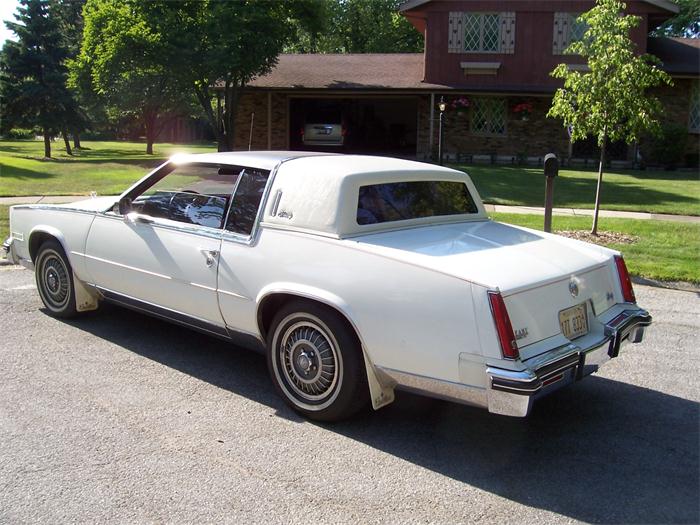 So when I was 16, I had a short-lived stint at Shoney’s as a salad bar attendant. I’ve never worked that hard in my life on a consistent basis. I didn’t do well for several reasons. Read more
So when I was 16, I had a short-lived stint at Shoney’s as a salad bar attendant. I’ve never worked that hard in my life on a consistent basis. I didn’t do well for several reasons. Read more
A professional milestone
 It may or may not be common knowledge that, under my real name, I run B10 Mediaworx, an author services / digital formatting company, which I’ve been doing for the past … mmm … four years. I think. Anyway, before that, I was an at-home medical transcriptionist for six years. I haven’t worked out of doors in ten years.
It may or may not be common knowledge that, under my real name, I run B10 Mediaworx, an author services / digital formatting company, which I’ve been doing for the past … mmm … four years. I think. Anyway, before that, I was an at-home medical transcriptionist for six years. I haven’t worked out of doors in ten years.
Well, doing this with babies/toddlers isn’t easy, let me tell you, but once they started going to school, my work life got a lot more productive. And it was so blessedly QUIET. I love(d) working at home. Free and breezy. But a couple of years ago, I found I had a lot more work to do AND I was slacking on the internet during the quiet time. So I started going to the UMKC library on Sundays to work, Read more
Crashing my own kitchen
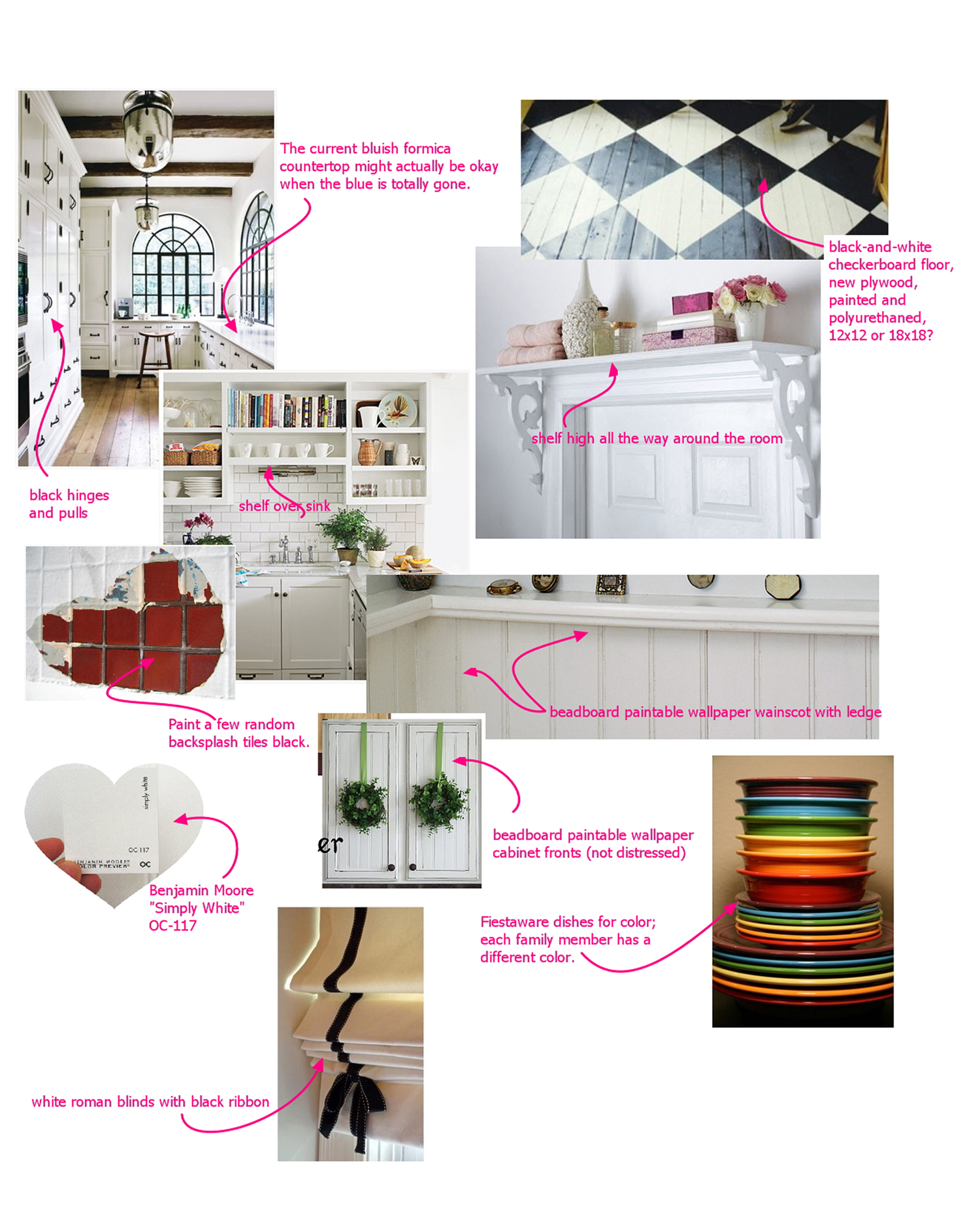
Economizing
…as the folks in Regency romances would say. With an “s.”
I’ve hosted a bunch of websites for years and never really thought much of it until I started listing how many and for how much money. It was the first time I’d seen it in one place before because they’re all spread out through the year and I get the bill and pay it.
So I’ve consolidated a bunch of my websites down to two: moriahjovan.com and b10mediaworx.com. The site where I had planned to host the serial was theproviso.com, but it wasn’t getting enough traffic to justify keeping it. Yet I still wanted a site where all my Dunham-related work was consolidated. Ah, the beauty of subdomains.
When you go to theproviso.com, you will be redirected to moriahjovan.com/talesofdunham. I’m not quite finished with it yet (is one ever?), but I’m happy with the clean look and the ease of editing the theme. Now, there are three links out there to free downloads that were hosted off theproviso.com. I have no idea where those links are, but as of last night when I canceled the hosting, they were still getting hits. Sorry about that, but money’s a little tight. No, not that tight.
Meh. The truth is my head got a little scattered and I had to declutter, consolidate, and reorganize.
I have assimilated. Sorta.
I have/had a Dell laptop I’ve had for 5 years. That thing has been a workhorse, but it had been having a couple of problems I either found a workaround for or put up with. It was on and cooking 12-18 hours a day every day. It had been reformatted twice, hauled around on vacation and to the library to work on it.
I go through keyboards like crazy because eventually the letters wear off and the fingernail grooves get too deep. That’s not why I get rid of them. I wear them out until they stop working. But I have an external monitor and wireless keyboard and mice. The most vulnerable parts of the machine were protected. Read more
NetGalley
For whatever reason, NetGalley has decided to start putting tighter restrictions implemented publishers’ tightening of restrictions on who gets free eARCs (electronic Advanced Reader Copies).
So what.
Here’s the thing: NetGalley charges what is, to me, a micropress, an astronomical amount of money to give away books. That’s right: I would be paying to give my product to people in exchange for … very little in the way of a quantifiable return.
NetGalley is not in business to lose money. It’s in business to make money by providing a publishers’ colony. However publishers decide to define their ROI (return on investment) is how NetGalley’s going to be bringing in the money.
Follow the money.
When all other explanations fail, just follow the money.
The mysterious ways of the universe
I’m in the middle of writing Magdalene, book 3 in my series.

If you’re passingly familiar with Christian myth,1 it should be quite clear where I’m going with this.
But let me tell you a little about my main characters.
Cassie St. James, MBA; Vice President-Restructuring Division, Blackwood Securities. In a previous life, she was a high-dollar hooker. She is divorced, lives in Manhattan’s Upper East Side, has four adult children (all of whom live with her), engages in strategic revenge, and possesses a latent penchant for silliness.
So I was on the search for a special little gift that Mitch could give Cassie that meant something but was not expensive. After all, what do you give a woman who can buy anything she wants?
Naturally, I turned to books because I have a vested interest in people buying books (product placement!). I decided that Mitch might have a special book that he may have acquired on his mission and is probably in French. Naturally, I googled, and then headed over to Wikipedia where I stumbled upon a list of French novels. I doggedly worked my way through them one by one, read the synopses, then picked one based on a vague similarity of the plot to Cassie’s past.
I wrote it into my book as if I’d read the thing (but hadn’t), then decided I probably should read it. And it freaked me out. Big time.
The book? Angélique, the Marquise of Angels by Anne & Serge Golon, first published in 1958.
Unbeknownst to me, this was a huge hit in Europe and apparently a big hit here. I’d never heard of it, never stumbled across it in the intellectual drunkenness of my youth (that actually amazes me).
The book is heroine-centric, so it’s all about Angélique. The parallel I found between Angélique and Cassie was that they both had arranged marriages. The similarity stopped there.
Angélique didn’t know her contracted husband, feared him at first, then grew to love him.
Cassie knew the man she was to marry, adored him from afar and was eager to marry him, and then quickly realized that her marriage was a sham.
Cassie is familiar with the story via film, so she has no problem making this parallel and had, in fact, written a paper on it during her undergrad years.
What doesn’t show up in the plot summary is a description of the hero’s “unusual way of life.” Joffray (the hero) is described as “scientist, musician, philosopher.” I didn’t think much of it. Mitch is a scientist with his own lab, true, but he’s also a CEO and I’ve always thought of him in those terms. He’s not a musician. He’s not a philosopher. At heart, he’s a blue-collar steel worker who loves steel enough to reinvent himself and the industry; steel is his life’s work.
Turns out that Joffray’s science is metallurgy. That was freaky.
Turns out that Joffray is hung out to dry, religiously speaking, for reasons that have nothing to do with religion and everything to do with power, politics, and money. That was even freakier.
As I got deeper and deeper into the book, I felt like I’d entered the Twilight Zone.
Then I got to the end. Angélique plunges out into the cold night, penniless and powerless, to exact revenge. That is so Cassie. I nearly expired from the freakiness the universe had perpetrated upon my person.
I couldn’t have picked a better novel if I’d written it myself.
I got your suggestions right here.
The Pareto Principle.
Also known as the 80/20 rule, wherein 80% of sales are generated by 20% of the customers. When applied to the way publishing gambles on blockbusters to subsidize its titles that lose money, it might be more or less 20% of the authors make 80% of the sales.
Publishers look for and sign new authors in a neverending search for the next blockbuster book that will sustain the 20%. Very often a new author will be taken on in favor of renewing a current author’s second or third book if the sales don’t meet expectations (which could mean that it did, in fact, make money, but not enough to satisfy the bean counters).
Last month, I was involved in a rigorous discussion on Dear Author, wherein author Courtney Milan likened publishing’s ability to support this model to pooling risk or, more precisely, flood insurance. I found the flood insurance specificity to be flawed and said why, but really I found the whole “risk pooling” argument flawed, but couldn’t articulate it, so I remained agnostic on the subject for the moment.
Now, after having stewed on it for a while, the better (read: more polite) analogy would be research and development—except without so much the development part.
Recently, president of Farrar, Straus & Giroux, Jonathan Galassi, wrote an extraordinarily unorganized, incohesive rant op ed piece in the New York Times concerning whose rights are whose once the publishing house has put its resources into a manuscript to make it a salable product. Quite frankly, other than the amusing fact that he (an editor) wrote an essay not worthy of a high school freshman learning the basics of English composition, I don’t give a shit about what he thinks the publishers’ value-added rights are.
It was his exemplar of an author long dead, into whom marketing resources were invested to make him that success, that struck me as disingenuous. And a non sequitur. Or ignernt. Dude. You do realize that very few new authors are given these kinds of resources, right? Publishers throw new authors at the wall to see who sticks. There is no “development” counterpart to “research.”
Given that, I’ve moved on from a publisher’s resource allocation to be “risk pooling,” to “research and development,” to “shotgun approach.”
Hang with me—I know I’m only about the 1,537th person to say this, but I do have a point.
So yesterday on Teleread, Rich Adin from An American Editor opined that the way to save publishing is to kill the paperback. When the usual suspects (me) broke out with the usual reaction (Are you out of your fucking mind?), he shot back with, “Well, do you have any better ideas?”
Never mind I have no interest one way or another whether publishing remains profitable, and it’s not my job to put little slips in the suggestion box that will be ignored, and people (readers) have been screaming their fool heads off about what they want which would keep publishing profitable and publishing’s just not paying attention, I will tell you how to keep publishing profitable:
Do less research.
Put a little more development into your research.
Quit getting caught up in auction fever.
Embrace the e-book and treat it as deferentially as you do your other formats and respect those people willing to pay for it. Court them. Cultivate them. They have money to spend on books. Really.
The point is to make every title profitable, or as close to it as you can get.
But I don’t really think you care.
Dear bandwidth looters:
You have probably realized by now that the link on the iTouch image from The Forbidden Apple post is broken. I did that. On purpose.
I don’t care if you take the images from this site, but take the time to save them to your own box and upload it to your server yerowndamnself.
You’re costing me bandwidth, with no return on my investment.
Fucking looters.
There is no such thing as royalties
… in self-publishing.
Self-publishers do not “earn royalties.”
Stop thinking in terms of royalties.
It’s called “profit.” There is overhead. There are COGS. There is revenue.
Why? Self-publishers manufacture a product;1 they have not licensed a product.
Gross profit – overhead = net profit (aka ka-ching)
There are no royalties.
Royalties do not exist.
Say it with me now: Self-publishers do not earn royalties; they have profit. Now put all that “royalties” BS out of your head.
And Amazon? I know you know this, but you use the term deliberately to blur the lines between your retail business and your POD service. You know very good and well you don’t pay royalties. You give us a rebate on our rental fee for your stalls, you know, like at a flea market.
1. A lot of authors don’t like having their babies compared to widgets. A lot of authors don’t like having books compared to babies. My books are my babies. They are also my widgets.
PSA for LDS publishers
Y’all probably don’t read my blog. I curse muchly and there is “sex” in my banner, not to mention a bare nekkid lady.
Before you read any further (if you are still reading or the least bit interested), please go to these websites and study them. Ignore the content; I want you to see what they’re doing. Then come back. I’ll wait.
- B10 Mediaworx
- My Bookstore and More (mostly Samhain Publishing’s titles, but look under the “manufacturers” tab and see the other e-book publishers).
- Loose-Id
- Ellora’s Cave
- Baen Books
- Zumaya Books
- eBooks.com
- Project Gutenberg
- Fictionwise
Back? Cool. Now, please go here:
- Amazon Kindle
- Sony e-book reader
- iPhone
- iTouch
- BlackBerry
- Palm Pre
- A more complete list of e-book readers
Did you understand what I wanted you to see? Awesome!
As a consumer of e-books, I would like to offer you a friendly suggestion, which is to embrace the digital distribution of your titles. The e-book publishers I linked are making money hand over fist. The devices I linked are the way people read e-books. This will grow.
You probably don’t understand the seduction of having an entire library in your palm, and that’s okay. There are lots and lots of people who say they won’t give up print for anything, and then they get to live with an e-book reader for maybe two or three days, and they’re hooked.
There’s also something very seductive about being able to log onto an e-bookstore and download a bunch of books onto your device immediately. No driving. It’s all about impulse. I can talk myself out of an Amazon purchase because it involves shipping time. It leaves the shopping cart and goes into the wish list, never to be seen again. I don’t even want to go to a bookstore anymore.
I’ve now encountered three small LDS presses and individuals somewhere in the LDS publishing arena dismiss e-books as so much of a passing fad, a waste of time or, worse, think that “e-book” is synonymous with “PDF.” I simply have to shake my head at their short-sightedness.
Be on the cutting edge of the digital age of books. Take a cue from the church’s rabid embrace of the interwebz and streaming audio and its ability to reach its members nearly effortlessly.
But beyond that, the take-home message here is this: E-bookstores are dangerous to the health of my checkbook.
Want to know the real reason I don’t buy anything from Deseret Book, Zarahemla, Signature Books et al? No e-books. I want to read your books; really I do, but I’m not going back to paper unless you give me something terribly compelling. I buy e-books on impulse. Impulse. Hear that? IMPULSE.
Please give me a reason to throw my money at you in the middle of the night when one of your titles catches my eye. Pretty please?
Writers: Accept it and keep going. Or not.
Keep your day job.
Accept that you will not be able to quit your day job.
Regardless how much weeping and wailing and gnashing of the teeth goes on around the web about monetizing art, if you’re a writer not already pulling income that allows writing to be your day job, just deal with the fact that you probably aren’t going to.
In my mind, making peace with the fact that you have to keep your day job is a lot easier than spending all your creative energy to resent it. Ask me how I know.
Today, right now, as I look over the fiction writer landscape on the web, I see lots of writers I can slot into roughly five categories:
- The unpublished authors seeking publication via the normal route (query/reject/revise/repeat). They’re hustling to get an agent’s attention, and possibly spending money on ink/toner, paper, envelopes, and postage to do so. They aren’t earning any money.
- The midlist authors having to prove their numbers in order to get their next book contract, which means they have to hustle and market and fight to make sure people know their books exist (especially if they aren’t in Wal-Mart or Target). They probably aren’t earning enough to write full time.
- The self-published authors having to fight just to let people know they and their work exists. They probably aren’t earning enough to pay the cost of producing their book(s), much less earn a living.
- The career category authors (Harlequin/Silhouette) and e-published romance authors (Samhain, LooseId, Ellora’s Cave), a good portion of whom can earn a fairly decent living cranking out the books, but there’s a catch: Putting out enough books to make that kind of living has to be grueling. At least, it would be for me. YMMV. The advantage to e-publishing over career category publishing, though, is that your titles never go out of print and you have A) time to build a backlist and B) your backlist is forever available to any late-night shoppers with a credit card.
- The A- and B-list authors who have pressures of their own, I’m sure, to which I am not privy. This includes anyone who may (if they choose to) write only one book per year or fewer and earn a comfortable living doing so.
Now, I’m obviously #3, except that I’m doing okay: Not enough to quit doing my day job, but enough to bear out the investment of time and money. (See my Six-Year Plan.) However, my goal is the same as the e-published authors: Build the backlist and invest in the future.
I hate my day job. I really do. Yeah, it’s my own business but I hate the work, mostly because I’ve been doing it or something similar for years. It’s easier now that I have a couple of decent clients, but the work remains. I fight an uphill battle every day to Just Do It, but do it I must. Some days I’m more successful than others.
But the explosion of free versus paid writing that has kind of ballooned lately with Chris Anderson’s book Free, and Malcolm Gladwell’s review of that book in the New Yorker only reinforces the necessity of resigning myself to the fact that I must have a day job.
For now.
The fact of the matter is that I have better odds of doing so than unpublished authors who hold out hope that they’ll hit the lottery.
I also believe that I have better odds than those authors who have to prove every book via sales, even if all the stars are aligned against them (bad cover art, little marketing support, not being in Wal-Mart or Target); perhaps that myopic of me, but I’m hustling for 100% profit, while they’re hustling for 10% royalties and they’re locked into questionable digital contracts (amongst other things).
As for career category writing, I couldn’t do it (as stated above), especially within the restrictions of category. I know, because I tried, and missed the bullseye by half a hair every single time.
I also couldn’t do e-publishing because there isn’t one that would contract what I write, and I know that; I’d rather not waste their time or mine. Also, see above for the grind in order to make money.
Basically, what I have on my side is control and time. I’m going to write no matter what, and I’m going to write what the stories I have to tell. I’d rather put it out there for the opportunity to earn a little money than let it languish in the inboxes of agents who are also feeling the pinch.
Yeah, I think I’m in a really good position. I just can’t quit my day job.
Yet.
I’m slowly coming to terms with that.
A cautionary tale for authors and agents
You know, I shove a tanto in my gut and bleed all over the interwebz about my issues with embedded font evangelism in the name of book designer job security, then I get over it and I think I’m done.
Well, Penguin Books has reminded me this morning that not only am I not done, I’m now pissed off as a reader and not as a writer/publisher/e-book mark-up-er, except … this is really not about Teh Pretteh. It’s about DRM. I’m fighting the wrong battle. The book designers can go figure out their own lives. I’m a reader first, dammit.
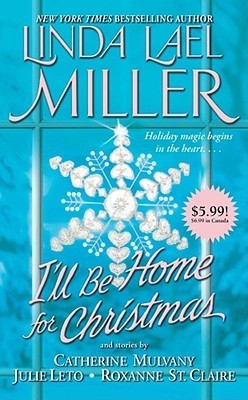
Way back in the day (six months ago), Penguin offered the novella “You Can Count on Me” by Roxanne St. Clair as a free PDF download you could snag from Ms. St. Clair’s site. It was part of a Christmas anthology called I’ll Be Home for Christmas and features characters from her long-running series called The Bullet Catchers. I believe there are currently three books in this series, with probably more to come.
Now, I don’t like romantic suspense and I don’t like anthologies and I don’t like Christmas romance novellas, but this looked like a good way to ease me into a romantic suspense series that already had me intrigued.
And it was free. No question.
Yet I forgot the cardinal rule of life: There ain’t no such thing as a free lunch.
Dear Penguin:
You suck. And not in the good, hot, naughty kind of way.
The novella is 97 PDF pages long, but it’s 5.25 MB. Why? BECAUSE IT’S A SCAN WITH A BIG FAT KANGAROO WATERMARK ON EACH PAGE.
To give you an idea of how big this is, my 736-page doorstopper’s PDF is 7 MB. 736 pages >97 pages.
I converted this novella before I realized it was a scan. Easy enough. PDF → RTF → IMP.
Except it wouldn’t load onto my eBookWise. WHY WHY WHY? Well, because it’s just too big. The IMP file is 68 MB.
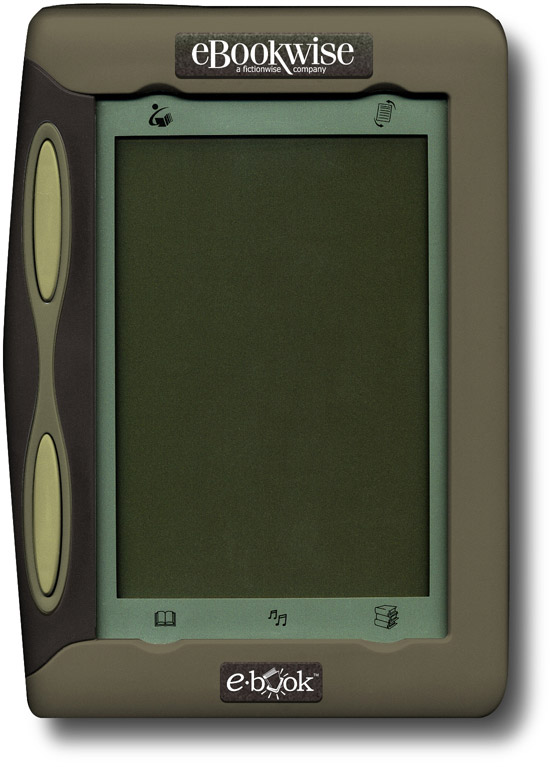
To sum up: Not only am I NOT going to read this free PDF (because I don’t read books on my computer), I’m also going to dump it from my computer (which I never do because even the bad books still belong to me) because it’s a space hog and severely cramps my Vostro’s innards when it tries to open the damned file, and I’m going to remember Ms. St. Clair (poor dear, I know it’s not her fault) for this and only this.
You cost me a lot of time with your chastity-belted freebie, time I could’ve used to make money to buy the anthology the novella came from and buy more of Ms. St. Clair’s work if I liked the novella.
Perhaps authors and agents negotiating contracts with you would do well to remember that your DRM process never gave me a chance to get hooked off your free hit.
Love,
Mojo
Update @8:38 p.m. It was just pointed out to me that the PDF file didn’t actually have any DRM on it. It was just a wildly bloated scanned-and-watermarked PDF. The effect, however, is the same: Make it as difficult as possible for the consumer to read the book. Every time I open the PDF, whatever else is in those graphics (it’s a scan, remember), it nearly crashes my computer.
One could argue that this is where book design and fear of piracy converge to create a virtually (heh) unusable product.
Settling for, settling in, moving up
A little while back, I posted on the sentimental value I hold of the 1960s ranch. Today, I’m rethinking 25 to 30 years’ worth of self-indoctrination.
Obviously the reason it holds so much appeal to me is that it was, in my teenage mind, the unattainable. I didn’t live in a house that nice, although I didn’t begrudge what I had. I liked it fine enough that I was proud to show it off to my friends, totally unable to see that what niceness I had was only that way because my mother worked so hard to make it nice with what little she had to work with. And on hindsight, I’m not sure my friends (from more chichi neighborhoods) were terribly impressed.
(You can tell my obvious slant toward the steep-roofed “French Provincial” style ranch.) Anyway, what I was doing when I was a teenager was aspiring up. That’s good to do. But somewhere, the adult me got lost in my teenage wants and conflated that to the end-all and be-all of existence.
Lately, Dude and I have been despairing over the state of our house and its issues, almost all structural, almost all of which will suck money right out of our bank account, with nothing aesthetic to show for it. Now, I’m all for infrastructure, but geez, that still doesn’t make my lawn dandelion-less. It also doesn’t account for the innumerable walls covered with crayon drawings that I would have to continually repaint to make the spaces halfway decent.
Thus, I have come to hate my house. This is a very difficult admission to make, especially when one considers how ecstatic I was over it in the beginning, and we moved in with the intention that we weren’t moving again. EVER.
A few days ago, a friend told me about a party she went to in a chichi neighborhood of L.A. and described the splendor to me. It shocked me that my first thought was, “Real people live like that?”
Today I saw a post over at The Red Brick Store about readying a house for sale. It was a gorgeous 4,000 square foot house, and the post led to pictures, which led me to search myself for flaws in my thinking. I didn’t covet the house, but it did make me wonder if I should dare to desire it at all.
Then I went to realtor.com and put in my favorite zip code (not telling which one it is) because it embodies my best childhood memories. Let’s just say it’s a rundown little village-size town in a rundown corner of a rundown state (not Missouri), and for the first time, I saw through my own little bubble of childhood memories and thought, “Am I aspiring to this? It’s 100 times worse than what I’ve got.”
Then I thought about the 1960s ranch across the street from me which inspired that other post. It’s beautiful, with lush lawn, kept immaculate at all times and with great care (care that it takes time and energy to spend, which we don’t have). You know what? Even aspiring to that is aspiring too low at this point in my life.
That gets me to thinking about my mother and what she did with what she had.
Which she hated.
Every day of the 18 years we lived there.
Knowing that we could have had something better if she and my father weren’t sacrificing a good chunk of money every month to send us to a private school.

After I revisited my childhood memories, I looked up properties in my own zip code, and thought, “THAT is what I should be aspiring to.”
We live in a neighborhood that retains its property values no matter what because A) Kansas City seems to weather recessions/depressions fairly well, even without Boss Tom, and B) the elementary school we have is one of the best in the state. People move into this neighborhood and within the school boundaries expressly for their children to attend that school. Believe me, we aren’t going to have to send our kids to private school for an excellent education, so there’s one obstacle conquered.
This has led me to some conclusions.
- I’m far more happy with what I have right now. (That may wax and wane.)
- We need to work on making it as good as it can be within our limitations.
- We need to build a plan to get out of here and move up once we have accomplished #2. And I want a swimming pool.
Whether we attain #3 or not … well, I just don’t know. I’m still somewhat dubious of our ability to do that.
However, if we don’t make the attempt, it most assuredly will not happen at all.
The state of the art
So today I’m listening to Babs and this line keeps jumping out at me: “Art isn’t easy, even when you’re hot. Advancing art is easy; financing it is not … Every time I start to feel defensive, I remember vinyl is expensive.”
In case no one missed me, I’ll tell you what I’m doing:
- Damned Day Job. You know, I’m awfully glad to have one right now, so I’ll refrain from bitching. See aforementioned financing art to understand why I feel obliged to tell you that.
- Had a very short deadline drop in my lap for a project I feel privileged to be part of, so there is much e-mailing and such going on around my office in order to get this yumminess out into the marketplace.
- Stay is finished sorta. A secondary character (a throwaway, but how come all my redshirts end up demanding their own stories?) garnered some attention from alpha readers who said, “Hey, what happened to him?” The original story with Vanessa and Eric is finished and in the hands of beta readers. Yet again I’ve decided to do something bizarre, which is to say, put two mirror-image stories back-to-back in the same spine.
- Magdalene is 3/4 finished. I believe Cassie St. James is the woman I’ve most enjoyed writing. Ever.
This balancing the art with the marketing is getting on my nerves, quite frankly. I’m a writer and I love my imaginary friends; I settle in with them and I’m mentally … gone … for days.
Plus, I’m still convinced that an author’s brand is the writing, the stories themselves. How can you have a brand that’s the writing if you only have 1 product?
I like blogging, don’t get me wrong—when I have something to say. I also didn’t like feeling like a slave to my stats, who’s visiting, where they’re coming from, what they’re reading …
Some days, I just don’t have anything to say and you know, I think more people should just not say anything when they have nothing to say. Not every second of every day must be filled with words just because we fear silence.
Taking another bite out of Apple
So finally my issue with Apple’s getting some play, which is to say, over at The Future of the Internet and How to Stop It blog.
Author Moriah Jovan had a book rejected last month on that basis (although the rejection didn’t mention the book’s more creative obscenities).
Let me be clear about one thing. My other obscenities are no more or less creative than the average steamyhawt romance novel. In my opinion. However, if the steamier novels could make the cut because of the absence of the F-bomb, then yet another level of hypocrisy will have been reached. (I’d be interested to know what, if any, romance novels get converted to apps and put in the store.)
The article talks about the difference between rejected apps that are NOT e-books because e-books do have an alternative method of distribution to iPhone. (Ahem, my book is available through the Smashwords/Stanza catalog.) Anyhoo, I’m hearing that there is absolutely NO organization to the iApp store, so maybe it doesn’t matter anyway.
Except, you know, my cover Bewbies are totally eye-catching, no?
The dangers of homogeneity
Quick linguistic review. From the Greek, homo- = same.
 On Twitter the other day, I clicked on a URL that normally wouldn’t interest me, but for some reason caught my eye. It was about the new Kraft corporate logo:
On Twitter the other day, I clicked on a URL that normally wouldn’t interest me, but for some reason caught my eye. It was about the new Kraft corporate logo:
Read the whole article, because it’s instructive, and I’ve been thinking about that off and on ever since. I don’t know why. Then I saw Sunday’s Wal-Mart insert and saw its new(ish) logo:
 Do you see a difference?
Do you see a difference?
Most of you will, I’m sure, since they’re back to back, but I, in all my ADDness, will glance and not see anything of import to differentiate the two. Thus, I will gloss over both. I’ve seen many other, similar logos, but I couldn’t tell you what companies they belonged to. I guess that’s my point.
I follow several different blogs that talk about social networking, branding, marketing, etc. because I know zero, zilch, nada about all this bullshit and I’d really rather not learn. However, it seems to me, in all my naïveté, that you would want your brand/logo to stand out, no?
All the writerly/agently/editorially blogs talk about branding one’s writing. Do we have logos or don’t we? How does one “brand” something that is, inherently, about … you? You have one product, or two, maybe sixteen, but really the product is you. If you have a following, your following buys you. If people don’t like your product, people don’t buy you. You are identifiable by your name.
But then there’s something like this:

Okay, I’m as much a sucker for matching anything and thematic continuity as the next fashion-obsessed girl, and don’t mistake me—these are gorgeous covers and put ’em together like this, they look plenty different. But put me in a bookstore without a list and I won’t remember which one I have and which one I don’t. What’s scary is that I could chalk that up to my gnat-like attention span or my ADD, except I’m not the only one with the complaint. By far.
It’s not just corporate brands or book covers. It’s cars, too.
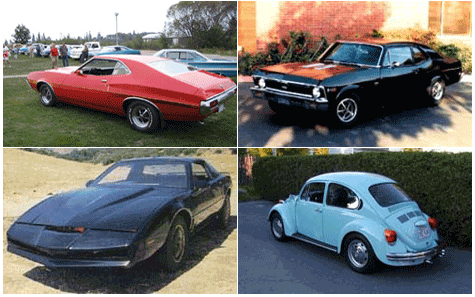 When I was in high school, a girl in my class had a ’72 Torino. A guy had a ’69 Nova. Another had a KITT car. I drove a ’72 or ’73 Beetle (one of those freaks of nature with the auto
When I was in high school, a girl in my class had a ’72 Torino. A guy had a ’69 Nova. Another had a KITT car. I drove a ’72 or ’73 Beetle (one of those freaks of nature with the auto-clutchstick). Occasionally. I used to be able to tell what car was what, and possibly the year.
But now?
 They all look alike. It was annoying when I didn’t have a vested interest in cars, but I went looking for a luxury car for Bishop Steel Baron (Magdalene, book 3) and I found … nothing that would differentiate a luxury car from a cheap Saturn, it was downright maddening. Are you kidding me? All this time I’ve been attributing that to the laws of aerodynamics and that’s probably the most likely explanation for it, but across the brand/corporate spectrum, from Saturn to Volvo, from economy to luxury, from SUV to SUV, the vast majority look alike.
They all look alike. It was annoying when I didn’t have a vested interest in cars, but I went looking for a luxury car for Bishop Steel Baron (Magdalene, book 3) and I found … nothing that would differentiate a luxury car from a cheap Saturn, it was downright maddening. Are you kidding me? All this time I’ve been attributing that to the laws of aerodynamics and that’s probably the most likely explanation for it, but across the brand/corporate spectrum, from Saturn to Volvo, from economy to luxury, from SUV to SUV, the vast majority look alike.
I put him in a Bugatti, in case you’re wondering.
Don’t get me started on tract housing, and that includes McMansions.
I know it’s human nature to be drawn to the familiar, but humans also like variety. I’m feeling a bit of brand oppression. The smoothing out of fonts, the smiley faces and flowers, the streamlining, the … aerodynamics.
Am I missing something? I thought branding was about differentiation. If people can’t tell you from someone else, how do they know to throw their money at you?




